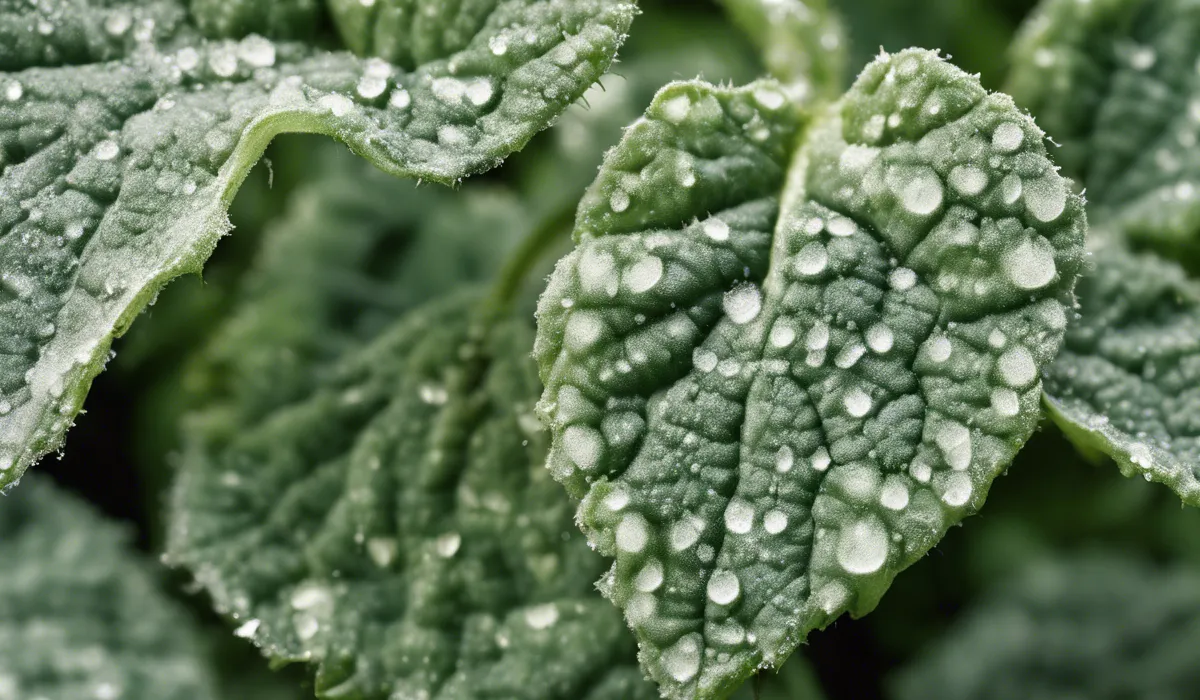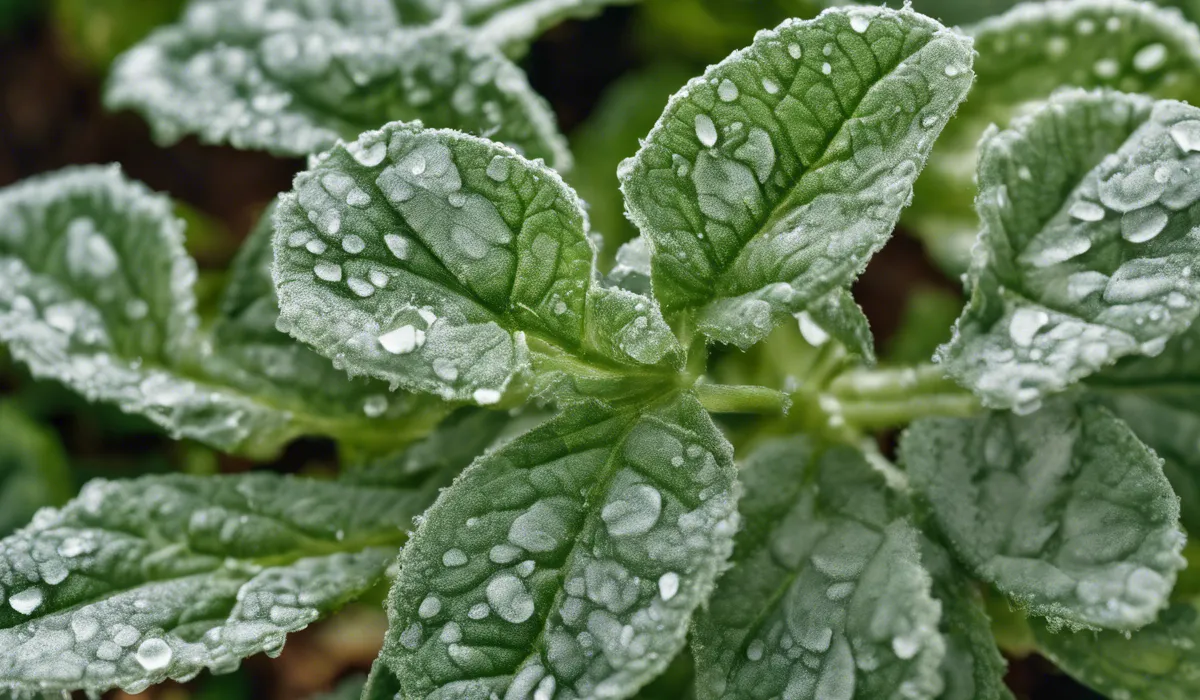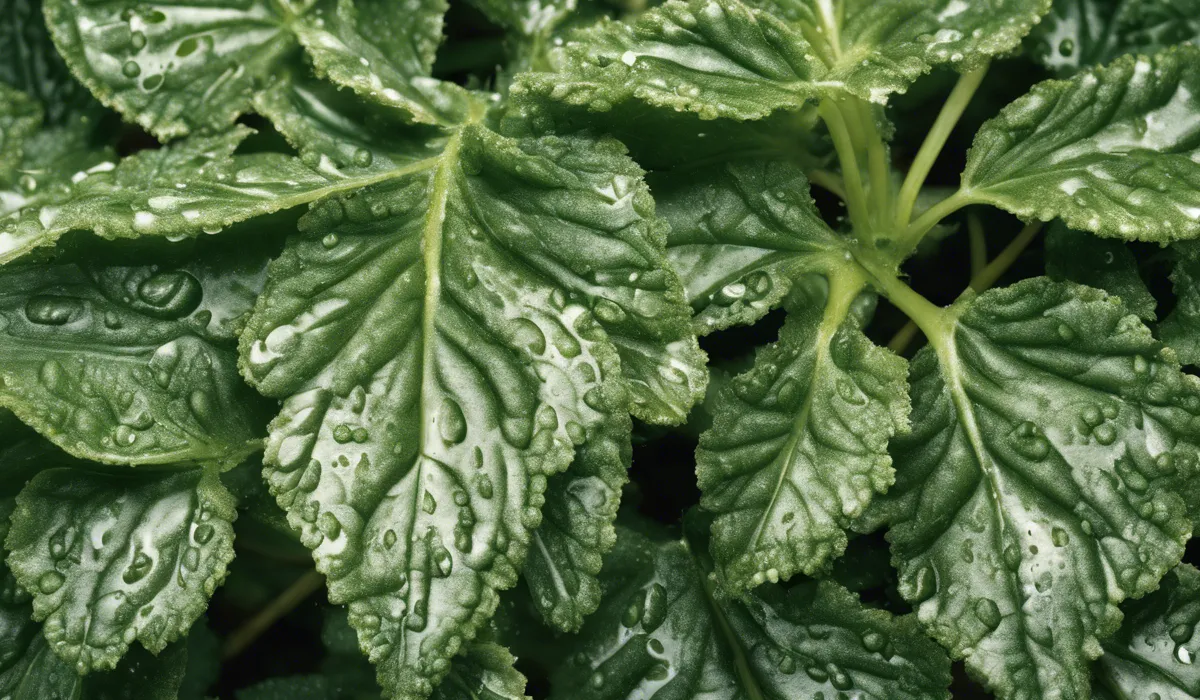To remove powdery mildew from plants, prune affected areas and dispose of them. Wash the plant with a mixture of 1 teaspoon baking soda per 1 quart water. Apply a fungicide specifically designed for mildew control. Ensure good air circulation around plants to prevent recurrence.
Identification of Powdery Mildew

Recognizing the Appearance of Powdery Mildew
Powdery mildew is a common fungal disease that affects a wide range of plants. This fungus appears as a white or gray powdery coating on the leaves and stems of plants.
It often starts in small patches that may go unnoticed at first. As it grows, the mildew spreads, covering larger areas with a dusty layer that resembles flour.
This substance is made up of fungal spores and mycelium, which is the vegetative part of the fungus.
Powdery mildew can make leaves look like they have been dusted with white or gray powder.
Plants Commonly Affected by Powdery Mildew
Many types of plants can get powdery mildew, but some are more susceptible than others. Common victims include roses, zinnias, cucumbers, pumpkins, and squashes.
Ornamental flowers and some fruits and vegetables are often affected. Indoor plants are not immune either; even houseplants can suffer from this fungus.
The mildew can infect many parts of the plant, including leaves, stems, flowers, and fruit.
Conditions that Promote Powdery Mildew Growth
Powdery mildew thrives in specific conditions that include high humidity and moderate temperatures. It typically appears in the spring and fall when days are warm and nights are cool.
It does not require the presence of water on the leaves for infection, unlike many other fungal diseases.
Poor air circulation and crowded plants can create an environment that is perfect for powdery mildew to grow.
Potential Impacts on Plant Health
While powdery mildew may not kill a plant directly, it can weaken it significantly by interfering with photosynthesis.
This can stunt growth and lead to yellowed and dried out leaves. In severe cases, it can cause leaves to drop prematurely and reduce a plant’s yield and vigor.
The overall health of the plant declines, making it more vulnerable to other stresses and diseases.
Preventive Measures

Ensuring Proper Plant Spacing for Airflow
One key to preventing powdery mildew is to allow for good air circulation around your plants. This means not planting them too closely together.
Space plants according to the recommendations for their specific type. Good airflow helps to reduce humidity around the foliage, which is less inviting for powdery mildew to take hold.
Choosing Resistant Varieties
Many plant breeders have developed varieties that are resistant to powdery mildew. When selecting plants for your garden, look for these resistant varieties.
They can greatly reduce the occurrence of powdery mildew in your garden, saving you time and effort in dealing with this problem.
Watering Techniques to Minimize Leaf Moisture
Proper watering can help prevent powdery mildew. Water plants at the base to avoid getting water on the leaves.
Avoid overhead watering, especially late in the day when leaves may not dry before nightfall. Damp leaves can create a favorable environment for powdery mildew to develop.
Maintaining Optimal Light and Airflow
Plants need the right amount of light and good airflow to stay healthy. Prune any overgrown areas to allow light and air to reach all parts of your plants.
Keep your garden free of debris and weeds that can block air and light. This can help prevent many plant diseases, including powdery mildew.
Treatment Options for Infected Plants

Organic Remedies for Mildew Removal
If your plants are already infected with powdery mildew, there are several organic methods you can use.
One popular home remedy is a baking soda spray made with 1 teaspoon of baking soda per 1 quart of water. Spraying this mixture on the affected plants can help control mildew growth.
Milk sprays have also been reported to be effective, as the proteins in milk can inhibit the fungus. Neem oil is another organic option that can help control many plant diseases, including powdery mildew.
Using Chemical Fungicides Wisely
For severe infections, chemical fungicides may be necessary. It is important to use these products according to the label instructions.
Choose a fungicide that is specifically designed for controlling powdery mildew. Apply it as directed, usually when the first signs of infection appear, and follow up as necessary.
Pruning to Remove Mildew
One of the first steps in treating powdery mildew is to prune away the affected parts of the plant. Remove any leaves, stems, or flowers that show signs of infection.
This can help stop the spread of the disease. Be sure to clean your pruning tools with a solution of bleach and water after use to prevent spreading the spores to other plants.
Cleaning Tools to Prevent Disease Spread
After treating plants for powdery mildew, it is important to clean your garden tools. This helps prevent the spread of the disease to other plants.
Use a solution of one part bleach to nine parts water to sanitize your tools. Dip the tools in the solution or wipe them down after use. This simple step can make a big difference in keeping your garden healthy.
FAQs About Removing Powdery Mildew from Plants
How can I identify powdery mildew on my plants?
Powdery mildew appears as a white or gray powdery growth on the leaves and stems of plants. It may first look like small white spots that gradually form a coating over the affected areas.
What is the first step in treating plants with powdery mildew?
The first step is to prune and dispose of the affected areas to prevent the spread of the fungus.
Can I make a homemade solution to treat powdery mildew?
Yes, you can use a mixture of 1 teaspoon of baking soda per 1 quart of water to wash the plant, which helps to control mildew.
Should I use a fungicide for powdery mildew, and if so, what kind?
Applying a fungicide specifically designed for powdery mildew control is recommended for effective treatment.
How can I prevent powdery mildew from coming back?
Ensuring good air circulation around your plants and avoiding overcrowding can help prevent the recurrence of powdery mildew.
Final Thoughts
Combatting powdery mildew involves prompt pruning of infested areas and proper disposal to prevent spread.
A home remedy includes washing plants with a baking soda solution. For more severe cases, applying a mildew-specific fungicide is recommended.
Maintaining good air circulation is crucial to deter future outbreaks and keep plants healthy.
